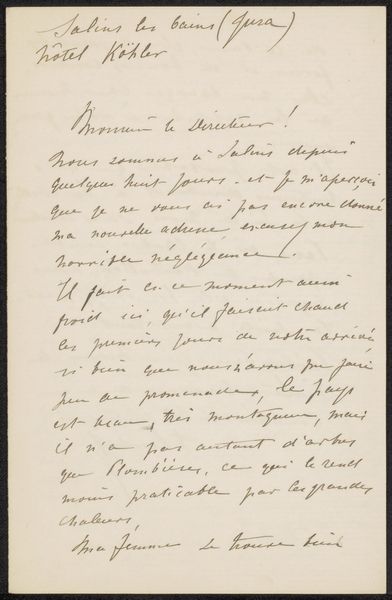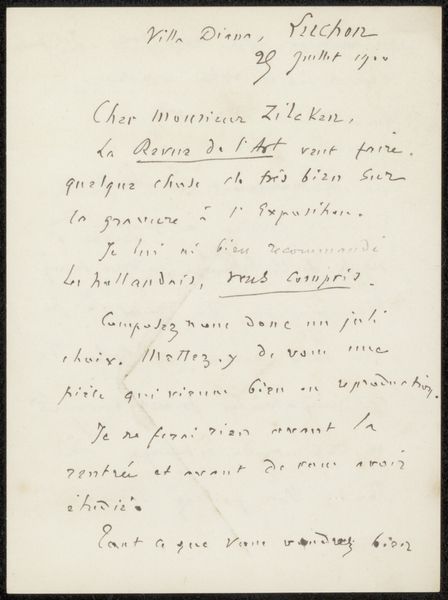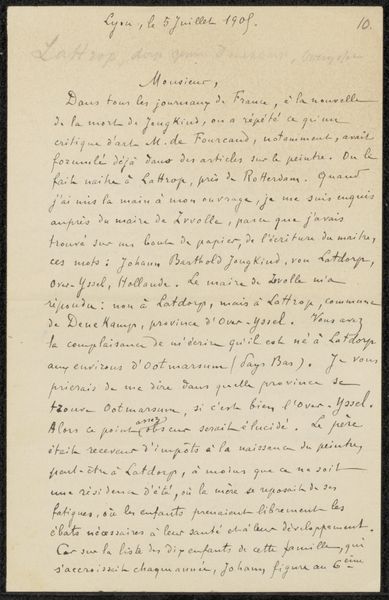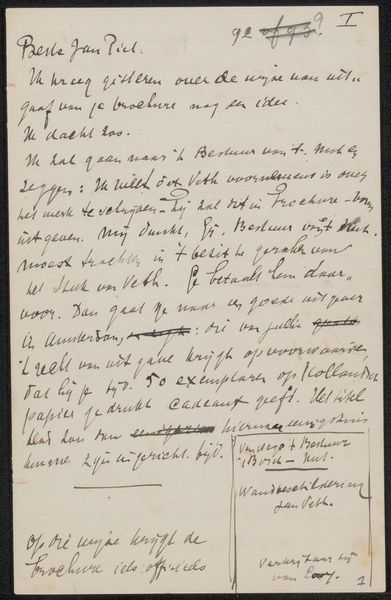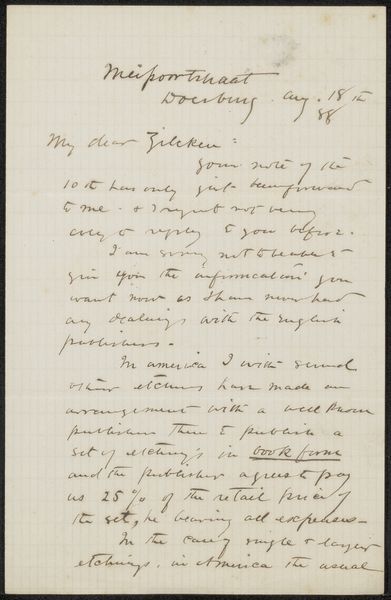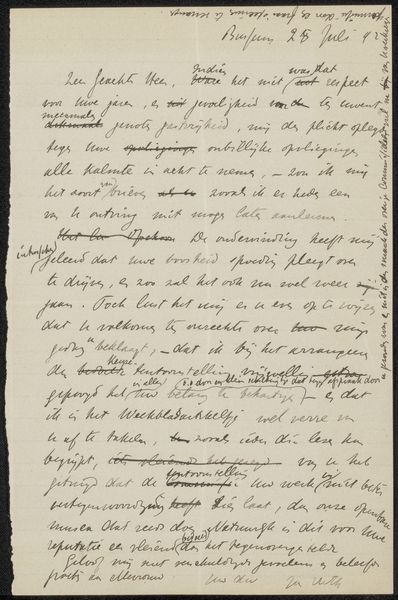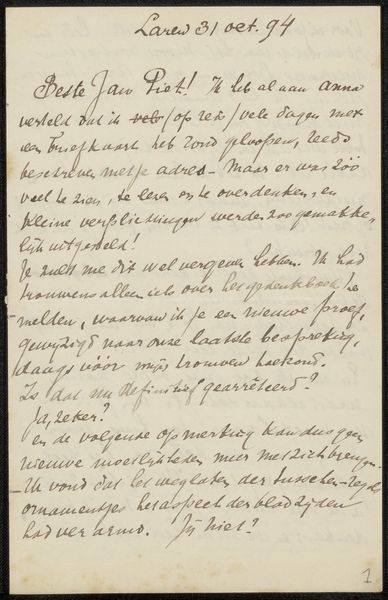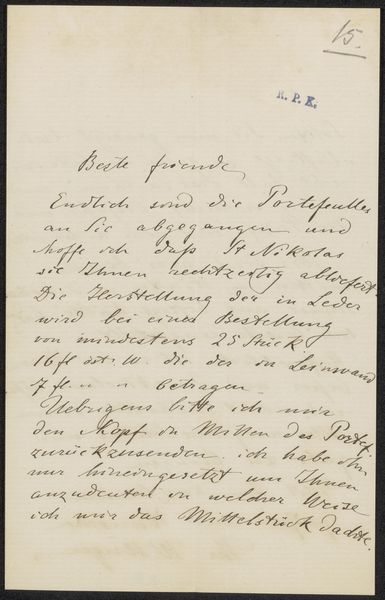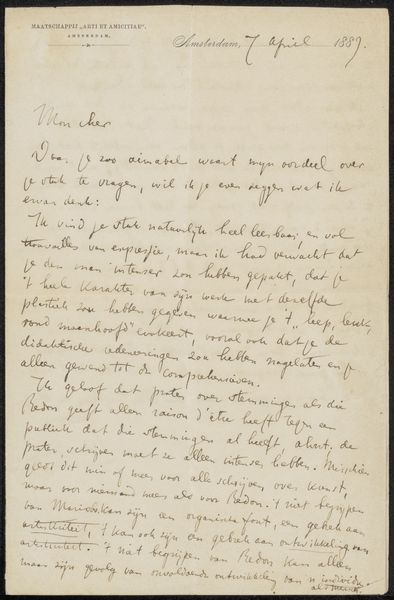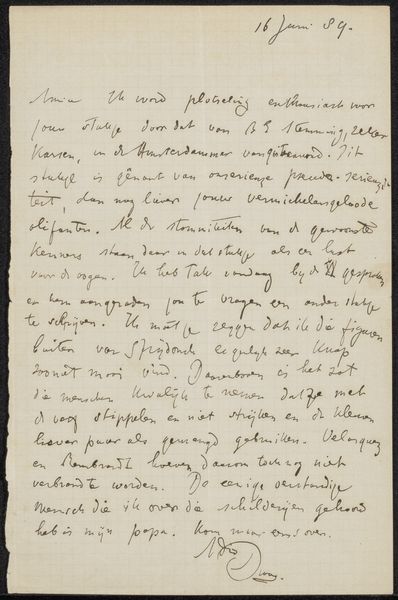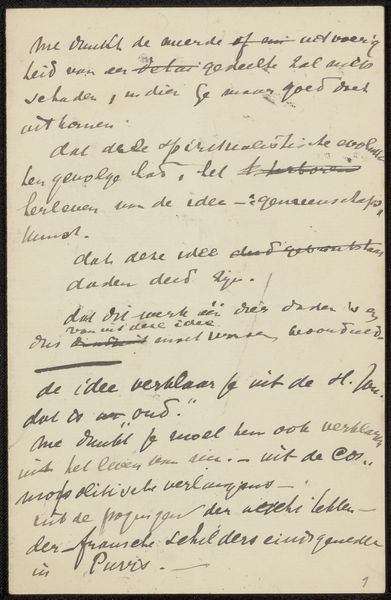
drawing, paper, ink, pen
#
drawing
#
hand drawn type
#
paper
#
ink
#
pen
Copyright: Rijks Museum: Open Domain
Editor: This is "Brief aan Philip Zilcken," thought to be from between 1893 and 1899, by Jan Veth. It’s a pen and ink drawing on paper. At first glance, it feels like a private note, almost like we're not supposed to be reading it. What sort of weight do you see in something as personal as this? Curator: The act of writing itself is laden with symbolism. In cultures throughout history, handwriting has represented authority, intimacy, and even spells or incantations. Think of illuminated manuscripts or personal diaries. The deliberate nature of forming each letter gives this text an almost talismanic quality. Veth isn't just conveying information, he's imbuing his words with a particular energy. Do you see any particular words that stand out visually to you, or seem to carry extra meaning? Editor: I see Rembrandt's name, "Anatomie," and also some French phrases. It makes me think that the letter is about art criticism, but more personally expressed. It almost feels more like a meditation. Curator: Precisely! Consider the period when this was created. The late 19th century was a time of great intellectual and artistic ferment. Veth may be exploring not only the visual arts, but also the intersection of language, memory, and emotion. The act of referencing Rembrandt invites reflection on the artistic lineage he belongs to. Each word, therefore, isn't merely a unit of information, but a vessel carrying the cultural weight of history. Editor: So it’s like each carefully chosen word has a network of other related images and thoughts attached to it? Curator: Exactly. He's constructing meaning, and it is about inviting the recipient into a conversation with artistic heritage itself. Editor: I hadn’t thought of handwriting as a cultural artifact itself. Now I realize it is its own unique kind of imprint!
Comments
No comments
Be the first to comment and join the conversation on the ultimate creative platform.
